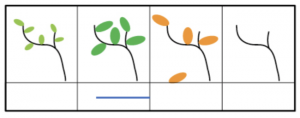Monarda didyma
Crimson Bee Balm
Lamiaceae
Mint Family

Crimson bee balm, indicated by its red color, is an unfortunate misnomer of a common name as this species is rarely visited by bees at all. Most insects are incapable of seeing the color red and as such Mondara didyma is primarily visited by hummingbirds. Other bee balms are sometimes visited by bees, but the flowers tend to be too long for their short tongues, and butterflies are the more important insect pollinators. The genus Monarda commemorates Nicolás Bautista Monardes (1493-1588), a Spanish physician and botanist. Monardes was one of the earliest herbalists to celebrate the new botanical discoveries of the Americas in such works as Joyfvll Nevves out of the Newe Founde Worlde (1577).
Crimson bee balm is a tall plant of moist woodlands, thriving in light gaps along woodland creeks and seepage slopes. It belongs to a group of 20 North American species, 4 of which are found in our region. It is the only Monardawith bright red flowers, however, and so is unmistakable (though it hybridizes with M. fistulosa, producing purple to magenta flowers). Sniff the flowers and you will be hard pressed to detect any odor. Fragrant flowers are for attracting insects, but this species attracts hummingbirds, which like most birds have no sense of smell. The foliage has a scent, however: the other common name “Oswego tea” stems from its popular use for tea. Like the related wild bergamots, M. didyma leaves have a pungent minty flavor.
